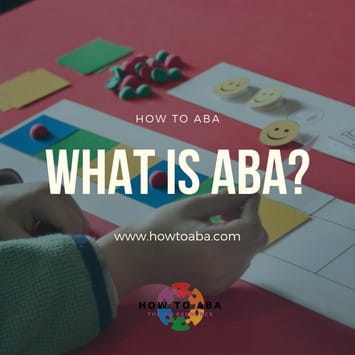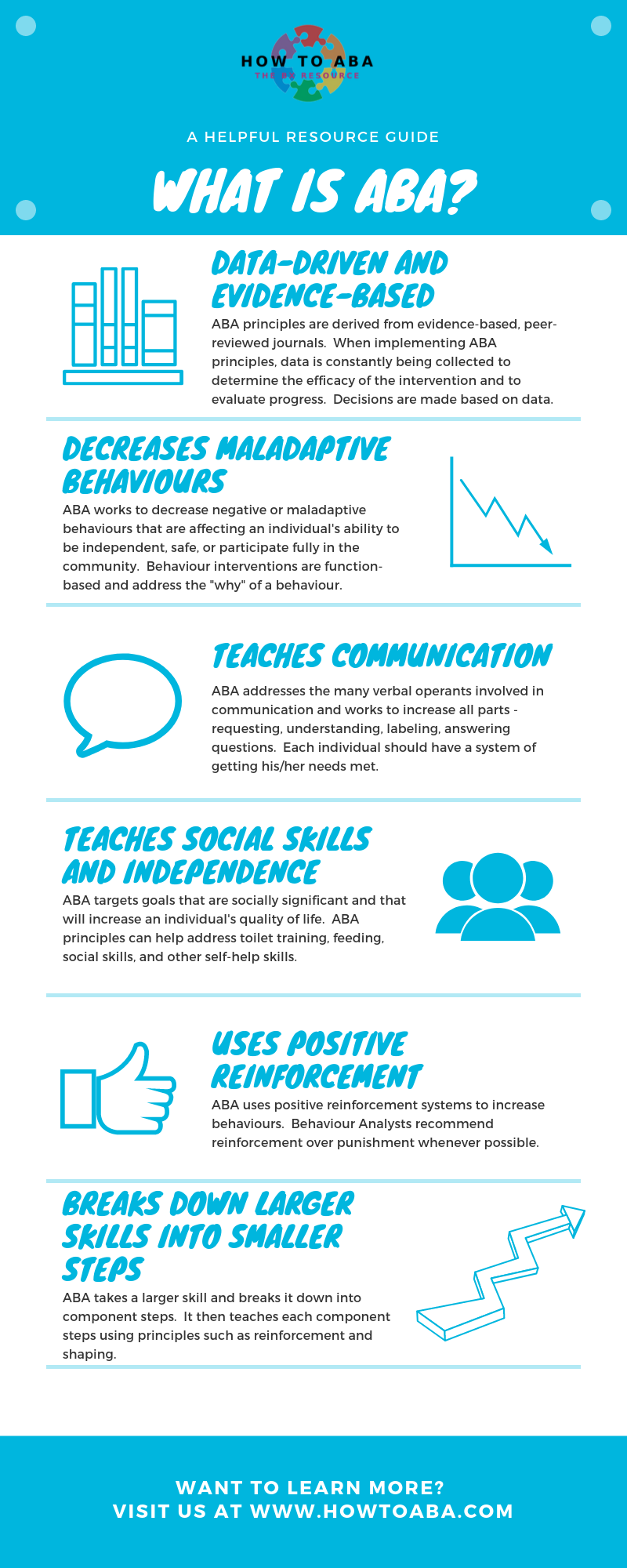
When I was first starting out in the field, I met someone who asked me what I do. When I told her that I am in the field of Applied Behaviour Analysis, she responded with something like, “Oh, that doesn’t work. It just makes kids robotic and learn to clap on demand.” I was floored. I knew that it wasn’t true but I hadn’t been in the field long enough to be able to articulate a proper response. As I learned more about the field of Applied Behaviour Analysis and became more experienced, it became a passion of mine to debunk the myths of what ABA is and is not. I am also passionate about educating parents and other professionals about the field and all the things that ABA has to offer. it is heart-breaking when parents whose kids can benefit from ABA have a misconception about what ABA is and choose not to use it.
When we asked our community about how they would define Applied Behaviour Analysis, it was reassuring to hear how many parents had positive, life-changing things to say about the field of ABA.
“An answered prayer! Helped my son so much!”
“The best thing I ever did for my son.”
“It is like the light that enlightens our way”
It is challenging to define ABA because it can be so many different things, all equally important! Since so many of us find ourselves in these conversations, defining, defending, and representing Applied Behaviour Analysis, we want to go over our definitions here.
Data Driven and Evidence-Based
ABA principles are derived from evidence-based, peer-reviewed journals. When implementing ABA principles, data is constantly being collected to determine the efficacy of the intervention and to evaluate progress. Decisions are made based on data.
Can Decrease Problem Behaviour
ABA works to decrease negative or maladaptive behaviours that are affecting an individual’s ability to be independent, safe, or participate fully in the community. Behaviour interventions are function-based and address the “why” of a behaviour. With a function-based approach, we can quickly get to the reason of the problem and replace it with something more functional (https://howtoaba.com/antecedent-teaching/)
Teaches Communication
ABA addresses the many verbal operants involved in communication and works to increase all parts – requesting, understanding, labeling, answering questions. Each individual should have a system of getting his/her needs met. A large part of our interventions rely on teaching an individual a functionally equivalent replacement behaviour which is often some sort of communication.
Teaches Social Skills and Independence
ABA targets goals that are socially significant and that will increase an individual’s quality of life. Applied Behaviour Analysis principles can help address toilet training, feeding, social skills, and other self-help skills.
Uses Positive Reinforcement
ABA uses positive reinforcement systems to increase behaviours. Behaviour Analysts recommend reinforcement over punishment whenever possible.
Breaks Down Larger Skills into Smaller Components
ABA takes a larger skill and breaks it down into component steps. It then teaches each component steps using principles such as reinforcement and shaping.
We want you to feel as passionate about spreading the Applied Behaviour Analysis love and educating parents about the amazing things that ABA has to offer. So we created this easy to read visual of our definitions of Applied Behaviour Analysis!


I like this post. It is always a good idea to clarify to ourselves as professionals and to people we work with as well as to others in the community about the true meaning of ABA. Feel free to check out my handout and article on ‘What is ABA.’ https://www.abaparenttraining.com/home/2019/3/21/basics-of-aba-for-parents-aba-parent-training-guide.
Pingback: DTT, ABA, PRT, IBI - WTH?? Why So Many Acronyms?
Pingback: ABA Glossary - How to ABA